Implant Supported Dentures
Implant-supported overdentures or implant dentures are a type of full overdenture that is supported by or attached to dental implants. A regular denture that rests on the gums that tends to fit less firmly. An implant-supported denture has special attachments that snap onto attachments on the implants providing better retention to the overdentures. An implant supported denture may be done in either the upper or lower jaw. 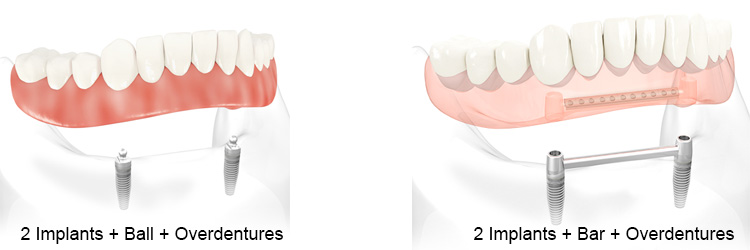
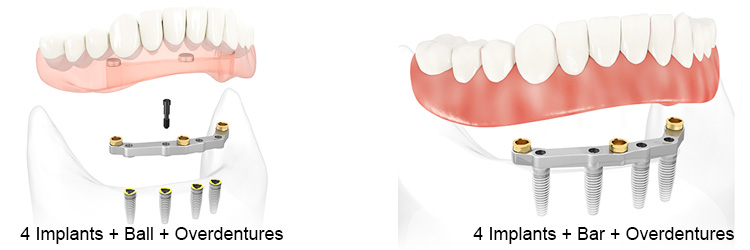
Benefits of Implant Supported Dentures
- an implant-supported denture is more stable than a regular denture
- enables individuals to speak more easily
- less worry that denture may become loose or fall out of mouth
- able to eat more types of foods but still avoid chewing hard or sticky foods as they can damage the denture
- feels more natural than a regular denture because the denture no longer covers the roof of your mouth
- removable prosthesis, treatment may be based on the patient’s existing conventional denture if wear, function and esthetics permit for certain cases
- dental implant dentures are a less expensive alternative relative to full fixed bridges
Types of Implant Supported Overdentures
There are two types of implant-supported dentures:
- Bar-retained : A thin metal bar that follows the curve of your jaw is attached to two to five implants that have been placed in your jawbone. Clips or other types of attachments are fitted to the bar the denture, or to both. The denture fits over the bar and is securely clipped into place by the attachments
- Ball-retained : Each implant that is embedded in jawbone holds a metal stud attachment that fits into another attachment on the overdenture. In most cases, the attachments on the implants are ball-shaped that fit into sockets on the overdenture but may be reversed in certain cases.
In both cases, the overdenture is normally made of an acrylic base that will look like gums, with porcelain or acrylic teeth that look like natural teeth. Bar-retained dentures require at least three implants. Ball-retained dentures need at least two.
Implant Supported Overdentures Procedures
The implant are normally are placed in at the front of the jawbone where tends to be more bone in the front of the jaw than in the back, even if teeth have been missing for some time. The front jaw does not have as many nerves or other structures that could interfere with the placement of implants. The time frame to complete the implant supported dentures will depends on many factors. Aconventional dental implants procedure is normally followed for implant supported overdentures.
Dental Implants Procedure 1
Diagnosis and planning to determinine if implant-suported overdentures are suited for case. 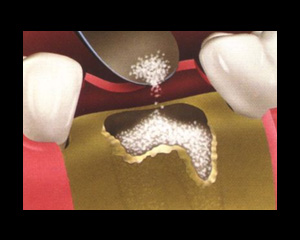
Dental Implants Procedure 2 (If required)
If there is bone resorption, the bone grafts are done in building up the bone. For mild to moderate bone grafts, this is done during the same surgical visit when the implant post is placed. For severe bone grafts, this is done as a separate phase and left to heal for several months before proceeding to the 1st stage implant post placement. 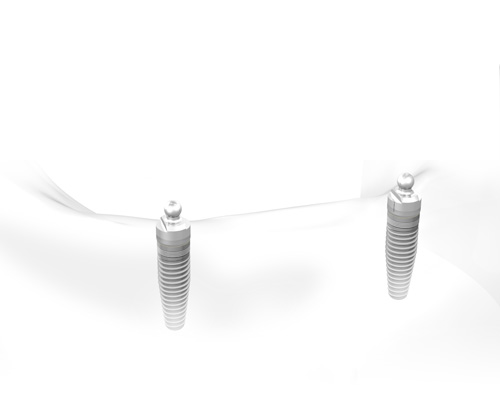
Dental Implants Procedure 3
The dental implant post are placed into the edentulous jaw. The dental implants are then normally left to heal for a period of time ranging from 2 months or more. During the healing period, existing full dentures may be modified or a new set of temporary full dentuers made for wear so that the patient is with teeth at all times. 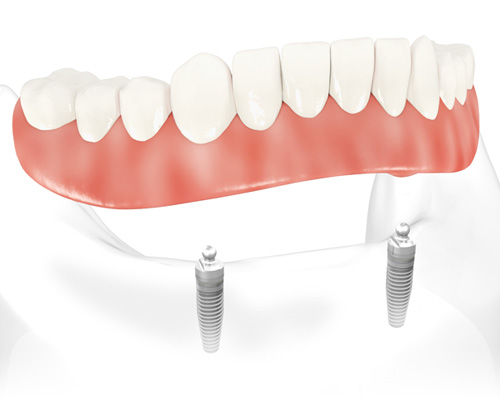
Dental Implants Procedure 4
Make final overdentures on dental implant posts. Place overdentures of ball or bar. Adjust and re-check overdentures for proper fit.
